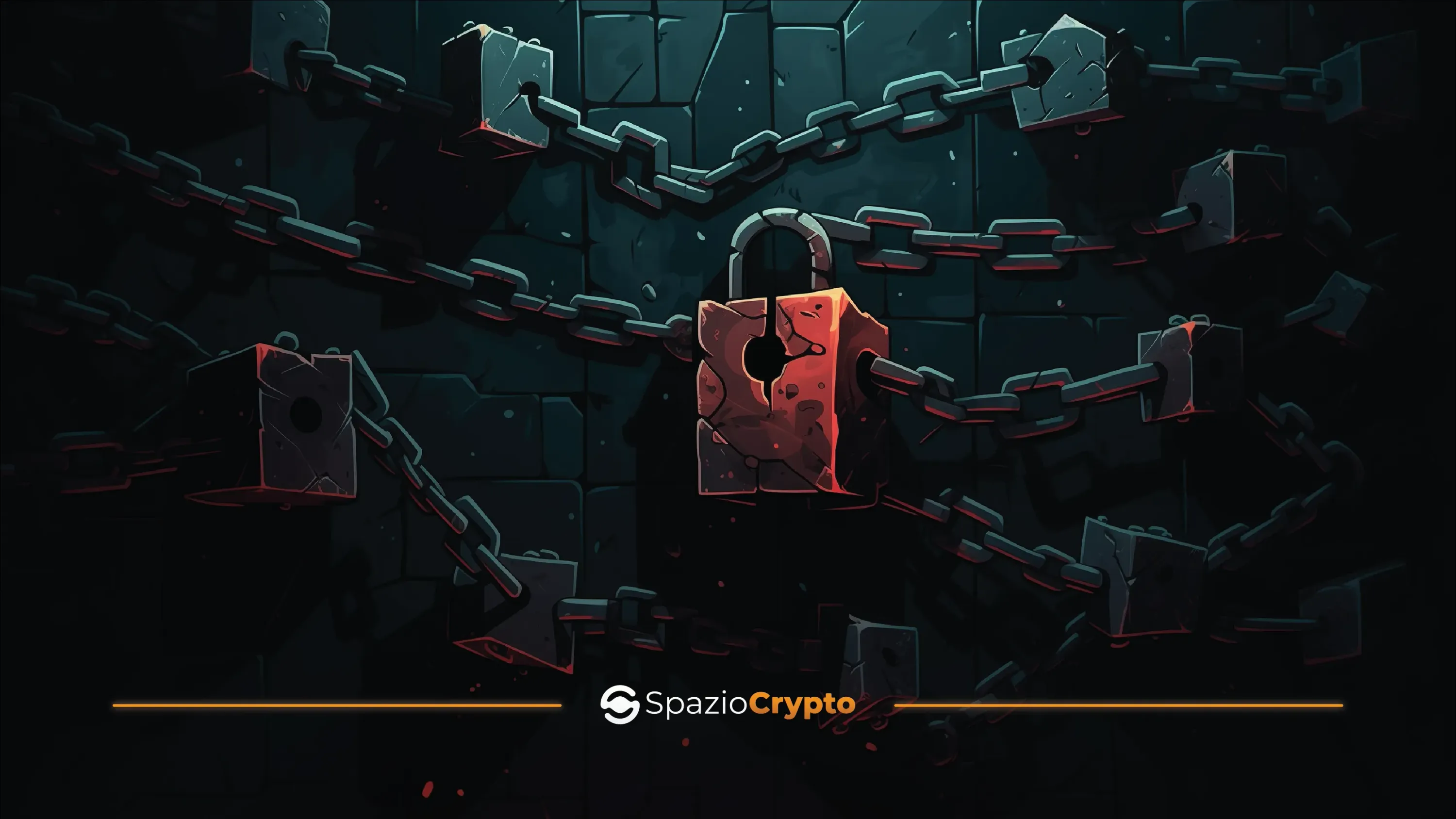Decentralisation is the cornerstone of blockchain, and nodes play an essential role in bringing this concept to life. To fully understand their impact, we must consider how the widespread presence of nodes eliminates the need for a central authority. In this context, the blockchain is configured as a peer-to-peer system, resistant to censorship and immutable.
The Nodes of the Blockchain: The Dorsal Spine of the Web3
The distribution of nodes over a decentralised network ensures that no single entity controls the entire system. Each node represents an autonomous contribution to the decision-making process, thus allowing for a more equitable and democratic governance. This concept of decentralisation, embodied by the nodes, not only reduces the risks of centralised manipulation but also contributes to greater overall network security. From the initial phase of transmission to its final confirmation, nodes work together to process and verify each transaction. During this process, nodes work in synergy to validate transactions independently, ensuring their consistency and integrity. The absence of a central authority implies that nodes actively participate in validation, ensuring that each transaction respects the rules agreed upon by the network. This level of transparency and trust is fundamental to the proper functioning of a blockchain.
Critical Role of Nodes in Consensus
Consensus protocols are a key element in blockchain, and nodes play a central role in this decision-making process. We take a closer look at the diversity of consensus mechanisms, from the classic Proof-of-Work (PoW) to the more modern Proof-of-Stake (PoS) and others. PoW implies that nodes solve complex mathematical problems to validate transactions and create new blocks. On the other hand, PoS assigns the right to validate blocks based on the amount of cryptocurrency possessed by the node. This variety of consensus mechanisms demonstrates how nodes are flexible and adaptable to the specific needs of each blockchain.
Security: Resistance to Corruption
A crucial aspect of the blockchain is security, and here nodes play a leading role in resisting corruption. The geographical distribution of nodes and their autonomy are critical elements in mitigating potential risks. Corruption resistance translates into the ability of nodes to maintain the integrity of the system even in the presence of malicious attacks. This level of security is a direct result of the distributed architecture of the nodes, which ensures that no single node can compromise the entire network. We will delve further into the details of node security in the following chapters, revealing the strategies adopted to preserve the robustness of the system.
How Do Blockchain Nodes Work?
Nodes are fundamental to the functioning of this technology. They are responsible for keeping the blockchain up-to-date and secure, and for verifying that all transactions are valid. When a node connects to a network, it must first synchronise with the existing chain. This means that the node must download all blocks and update its local copy. Synchronisation can take a long time, especially for larger blockchains. For example, Bitcoin's blockchain contains more than 700,000 blocks, which is equivalent to about 350 gigabytes of data.
Blockchain synchronisation can be performed in two main ways:
- Full Synchronisation: The node downloads and stores all the blocks on the blockchain. This is the most comprehensive way to synchronise the node, but also requires more time and resources.
- Synchronisation light: The node downloads only the information needed to verify transactions. This is the fastest way to synchronise the blockchain, but it does not provide the same level of security.
Verification of Transactions
When a transaction is made, the nodes in the network must verify it to make sure it is valid. Transaction verification is performed using a consensus algorithm. The most common consensus algorithms used are the consensus Proof-of-Work (PoW) and Proof of Stake (PoS). In PoW, nodes compete with each other to solve a cryptographic puzzle. The first node to solve the puzzle adds a new block to the blockchain and is rewarded with new cryptocurrencies. The same process occurs in PoS, with the main difference being that validators are chosen according to the amount of cryptocurrency locked in the ecosystem, 'in stakes'. The verification of transactions is a complex process that requires the application of a set of rules. These rules are designed to ensure that transactions are valid and that the blockchain is secure.
Block Validation
Once a transaction has been verified, it is added to a block. Blocks are then validated by a group of nodes, called the validation pool. Block validation is performed using a different consensus algorithm from the consensus used for transaction verification. The objective of block validation is to ensure that blocks are valid and have not been manipulated. The validation pool can consist of any number of nodes. Typically, the nodes in the validation pool are selected randomly or based on specific requirements. Block validation is an important process to ensure security. If a block is validated by an unauthorised node, it may have been manipulated and therefore invalid.
Types of Blockchain Nodes
Nodes are classified according to their role in the network. The most common types of nodes on the blockchain are as follows:
- Complete Nodes
- Lightweight Nodes
- Mining Nodes
Complete Nodes
Complete nodes are the most important nodes in the ecosystems. They are responsible for storing the entire chain, including all blocks and transactions. Full nodes play a key role in the security and integrity of the blockchain. They are able to verify transactions and validate blocks by themselves.
Light nodes
Light nodes do not store the entire chain. They only store the information needed to verify transactions. Light nodes are more efficient than full nodes, but offer a lower level of security.
Mining nodes
Mining nodes are responsible for creating new blocks in the blockchain. They do this by solving a cryptographic puzzle. Mining nodes are rewarded with new cryptocurrencies for their work.
Differences between Node Types
The different types of nodes on the Blockchain have several differences. The main differences are as follows:
- Quantity of Data Stored: Full nodes store the entire blockchain, while lightweight nodes store only the information needed to verify transactions.
- Security Level: Full nodes offer a higher level of security than lightweight nodes.
- Role in the Blockchain Network: Full nodes play a key role in the security and integrity of the chain, while lightweight nodes are more efficient but offer a lower level of security.
Nodes and Practical Applications
The nodes of the blockchain can be used in a variety of applications besides cryptocurrencies. In these applications, nodes play a key role in several factors.
Digital identity management
Digital identity management is a major issue in modern society. People need to be able to prove their identity securely and reliably in a variety of contexts, such as accessing government services, opening a bank account or purchasing goods and services. Blockchain nodes can be used to manage digital identity in a secure and transparent manner. In this case, nodes are responsible for storing and verifying information related to a person's identity, such as name, address and date of birth.
Supply-chain tracking
Supply-chain tracking is a process of tracking the movement of products and services from a supplier to a consumer. It is important to ensure product safety, traceability of resources and transparency of operations. Nodes can be used to trace the supply chain in a secure and transparent manner. In this case, nodes are responsible for recording information about the movement of a product or service, such as the date of production, date of shipment and date of delivery.
Voting Online
Voting Online is a voting system that allows people to vote without having to physically go to the polls. It is an important option for people who live in remote areas or who cannot travel to the polls for health or work reasons. Blockchain nodes can be used to enable secure and transparent online voting. In this case, nodes are responsible for registering voters' votes and ensuring that votes are counted correctly.
Smart Contracts
Smart contracts are automated contracts that are executed on the blockchain. They are an emerging technology with significant potential to automate transactions and reduce costs. Nodes are responsible for verifying and validating the terms of the smart contracts.
Intellectual Property Rights Management
Intellectual Property Rights (IP) management is a complex and expensive process. Nodes can be used to simplify IP rights management and make it more efficient. In this case, nodes can be used to store and verify information, such as patents, trademarks and copyrights.
Supply of Financial Services
Nodes can be used to provide financial services more efficiently and securely. For example, in the DeFi, nodes can be used to perform financial transactions, provide loans, manage investments, and much more.
Information Security Management
Blockchain nodes can be used to improve information security. For example, nodes can be used to track suspicious activity, identify vulnerabilities, and apply security patches.
Circular Economy Management
The circular economy is an economic model that aims to reduce waste and maximise the reuse of resources. Nodes can be used to support the circular economy in a number of ways, whether to track the movement of resources, to ensure resource quality, or to incentivise reuse and recycling.
The Future of Nodes
The blockchain is an emerging technology with significant potential to improve the efficiency, security and transparency of a range of applications. Nodes play a key role in this technology, ensuring the security and integrity of data.
The blockchain is still an emerging technology, but, in this Spacecrypto's Web3 Guide, we are convinced that it has the potential to revolutionise the way people interact with each other, and its future will depend on a number of factors, including adoption by businesses and governments, the evolution of the technology and the development of common standards. Nodes, being the skeleton of the ecosystem, are and will be a pivotal element in the growth of blockchain adoption.








